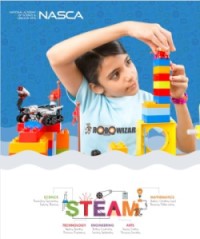- Zomato recently fired 540 people, 10 per cent of its staff. But did you know why? They were all customer support people, and a chatbot-based app came along that could handle customer queries. The firm wanted chatbot managers henceforth. Technology simply erased the old jobs and created a demand for new ones.
- Cognizant fired around 7000 employees with 70 per cent of its workforce being in India. But they did record a net profit for that quarter and didn’t really have to lay off. Why did they then? Well, they plan to invest that money in technologies such as Cloud and Internet of Things (IoT).
- Infosys laid off off 2400 employees to optimize costs and meet the need of technology upskilling.
Technology has been killing entry-level jobs. According to studies done, automation is estimated to cut up to 30 per cent of the jobs in India as bots will take over repetitive and low-skill tasks.
It’s ironical, isn’t it, that people employed in the technology sector are being laid off due to technology upgrading.
It’s not that doomsday is nearing
The digital waves may wash away old sand sculptures but they will create new shapes too.
Take retail, for instance. With e-commerce swamping the space, cuts in employment are going to be inevitable. But there will be newer roles — they will need professionals who are literate in digital technology and data sciences like retail data analytics, supply chain analytics, digital marketing, customer experience, fraud analytics professionals, etc.
The questions to ask are:
- How is the education sector responding to this rapid turn of events?
- Are you preparing your students for the new-age careers of tomorrow? If so, how?
- Also, what are these new-age careers? Which are the existing ones that will cease to exist?
- Are we then heading for a period of joblessness?
- Is our workforce skilled, upskilled and upgraded to meet these new-age careers?
- Are academicians, teachers, students and stakeholders in the education sector conscious and aware of this tsunami that may hit us?
- Are we realizing that the so-called middle jobs that require average skills are diminishing and people will have to be smarter with machines?
- Are we mindful that the new name of the game is Adapt or Perish. Maybe not.
According to a PwC research, 79 per cent of CEOs are worried about the lack of essential skills in their workforce. Not just CEOs, every organization is looking for employees who reskill and upskill themselves in order to make the most out of emerging technologies.
According to a report by Aspiring Minds, only 3.84 per cent of the engineers have the technical, cognitive and language skills required for software-related jobs in start-ups.
Additionally, a mere three per cent of the engineers have new-age technological skills in areas like Artificial Intelligence, Machine Learning, Data Science and Mobile Development. The average employability percentage for new-age jobs is just 1.7 per cent.
How is the world shaping up?
While we can only surmise about what life will be 10 years from now, it does pay to look at studies done in this field, and prudently observe the way society is shaping up and the resultant economic impact that we may see.
Technological developments in robotics, artificial intelligence (AI), 3D printing, Internet of Things (IoT) and the sharing economy may make millions of jobs disappear, but it also creates wealth by increasing productivity. This gives rise to a new set of jobs.
We live in a disquieting era. We have the highest recorded unemployment in decades, but it’s not just about the sheer numbers. Built into that, and feeding those numbers, is a process. It’s also a qualitative thing. We have a fast-changing job landscape, and not enough of the new skills to grab whatever vacancies there are.
Yes, they want software developers, systems analysts, business operations specialists and such like. But that doesn’t necessarily or exclusively mean only high-tech skill sets will be called for. Certain sectors will inevitably expand along with a growing population, and old-school human skills will never go out of fashion.
We’ll need more nurses, child/geriatric care-givers, physiotherapists. Customer service representatives are here for good too, but they’ll have to become software-oriented.
Good-old engineers are in that flux too. The virtuous cycle will be complete when technology comes to the aid of maids and cleaners. The trick is in attuning to the way society and economy are panning out. And in expanding your repertoire of skills that way.
What used to be a 30-year assured work cycle or career 50 years ago, shrunk to a 10-year one around a decade back, and now one needs a thorough upgradation every five years to stay relevant.
The question to ask is: can we bring about a mindset change in the government machinery, schools, teachers, parents and students to embrace this exciting future?


















